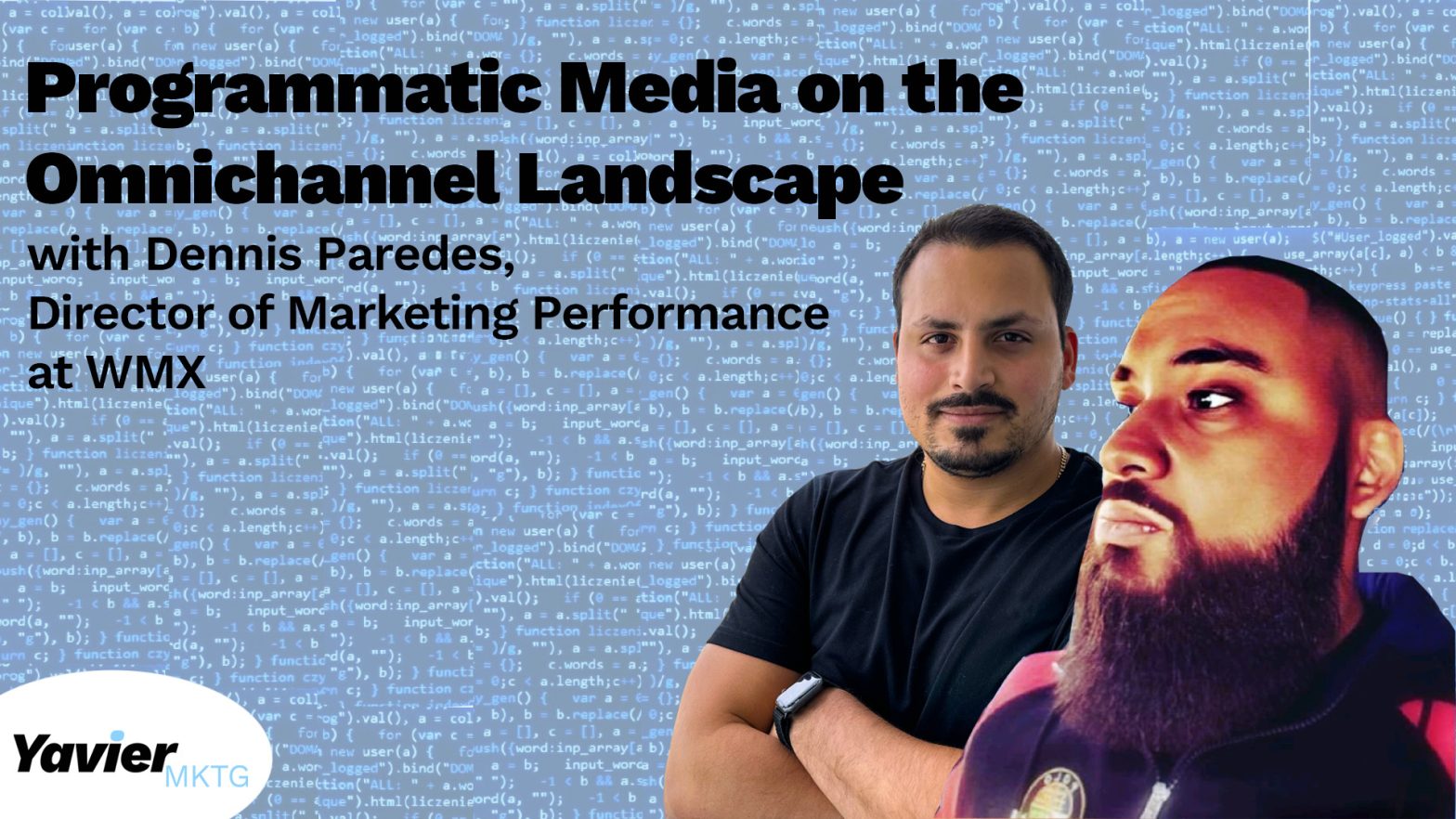In the last 20 years, we’ve seen how marketing has quickly evolved into technology or digital. Most people refer to the digital capabilities of marketing as digital marketing, but as I said before, we live in the digital age. We have traditional marketing approaches or channels such as TV, newspapers, flyers, radio, etc. Still, the reality is that even these channels have been evolving along with technology. Nowadays, we have connected TV (CTV), which is the same as TV, but instead of cable, it works from the internet (digitally); we have online radios such as Pandora or Spotify and even podcasts streamed directly from a platform. Newspapers are also available on the Internet or on an app. All traditional channels and approaches for marketing have been evolving, and the great thing about this is that you can buy ad spots from any of the examples I mentioned.
Back then, marketers had to contact the TV network to see how much money it would cost to display an ad and where their brand could place an ad on the respective TV channel or call the radio station for the same thing. Now, some platforms offer an inventory where you can buy ad spots directly from the publisher without contacting them. These platforms are called Demand Side Platforms (DSPs). Using a DSP, marketers can serve ads instantaneously wherever, whenever, and however they want. This way of buying ad spots or serving ads is called programmatic media.

Along with programmatic media, we have seen search marketing engines, email marketing, social media, and many other digital marketing approaches that have been growing. Many say that traditional marketing will fade or everything will shift to digital marketing. My take is that marketing is just growing along with technology and that traditional approaches will change from being the main strategies, channels, tactics, or ideas to supporting marketing campaigns or strategies.
The great aspects of digital marketing are that marketers or business owners can get real-time data, optimize the campaign at any time, have no budget limitations, exclude channels or people from the campaign, use multiple creatives at the same time, change creative at any time, and much more. In my opinion, the most important aspect of digital marketing is how target audiences can be developed. Target audiences in digital marketing can be developed in many forms. They can be based on interests, behavior, keywords, searches, data from other partners, locations, websites, YouTube channels, devices, and more. DSPs provide advertisers with capabilities for audience creation that will make it possible for advertisers to reach their audiences and generate an ROI or any other goal the advertiser is looking to achieve.

Before Creating any Marketing Strategy
Creating a blend of digital marketing approaches and some traditional efforts can make your marketing campaign successful. Before defining the channels and approaches, you must understand a couple of things:
- The message and tactics must be aligned with the business and overall marketing strategy.
- Define a clear objective for the brand’s development.
- Define a compelling and differential value proposition.
- Identify the online and offline communication tools.
- Understand and support the customer journey through the buying process.
Once this is done, you can start developing your funnel approach based on the customer’s journey and define each strategy for each funnel part. To do this, you can use the RACE Planning framework of integrated digital marketing, which is a way to plan or define the activities and measures businesses need to master to thrive in today’s marketing world. It is similar to the marketing funnel and funnel strategy I’ve discussed in the past.

(Image taken from smartinsights.com)
Once this framework is defined for the business or brand, you can create a strategy to tackle the marketing funnel. After the framework and the funnel strategies are defined to measure success for each part of the marketing funnel, you must determine the KPIs. In one of my last Instagram posts, I explained how this must be done to achieve the marketing goal and to find any performance issues in digital campaigns. It is important to understand that each funnel part supports the next part. With that said, if the awareness phase is not performing, the consideration phase won’t perform, and if consideration is not performing, then conversions will not happen.








Leave a Reply